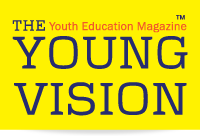
Treasure from Trash
By Kavya Prasad, Student- Class XI, DPS Dubai
Science and maths may possibly be two of the most loved and hated subjects! Concepts like gravitation, Newton’s laws, and planetary motion give many students sleepless nights. Science, Technology, and Engineering &Maths (STEM) are very important for progress of the world.
I got together with some friends to find out what we can do to instill a love for science and explore what makes learning science dreary. This inquiry led us to the conclusion that when we are able to understand and make a connection to the real world, Science is interesting. So how does one go about doing this – only by engaging in experiments and building models that explain the concepts. How can you understand the functioning of a pulley if you have not used one, how does one understand hydraulics without seeing this in action?!
So we embarked in a project called “Treasure from trash” – whereby each of us took on the task of building science models and explaining them to the other students – thereby enhancing their understanding and interest in science. One special feature of our project was that we decided to use recycled products and day-to-day materials that are available at home to build these models.
The project finally came to fruition and we had a display of all the models we built at the HDS Tower at Jumeriah Lake Towers on October 5th 2014– an event well-attended by students, parents and members of the community.
I personally built a few models. To demonstrate the planetary motion I made an Orrery. This required the use of pulleys that I built using cardboard discs, rubber-bands, and styrofoam balls to depict the planets and the moon. This model showed how the heliocentric system works.
I further used similar pulleys to build a carousel (a merry-go-round) – which I made with a motor from an old toy that converted the rotational motion to a spinning carousel. I decorated it with old greeting cards, buttons and pins and children were delighted to see it spin at the flick of a switch.
My working-model of a hydraulic lift made use of waste syringes to push up the collapsible lift that I made with used ice-cream sticks.
Many of my younger team members explained the water cycle and the life cycle of butterfly – all made using waste cotton wool, clay and cardboard.
Another member, Visvesh, explained a model to demonstrate the wave motion – which he did using sticky tape and used drinking straws. It clearly showed the propagation of the waves and the formation of crests and troughs.
Nidhruv demonstrated two interesting projects – the first showed a magnetic levitation train that he had built with magnets. He explained the operation of these trains in China & Japan. He also had built a model of a hovercraft – with leftover party balloons tied on a bottle cap and old CD disc. Participants rejoiced when the hover craft skimmed the surface and moved!
Priyesha and Srinidhi had built a model of a biogas plant – which looked very realistic – and demonstrated how it worked and its uses over traditional methods of energy production.
There were about 20 models that were made by us and demonstrated to the group. Everyone present found it very informative and it was a wonderful and creative learning experience. There were many budding scientists in the making! The parents agreed that making models also improves the cognitive and problem-solving skills of the children. All the children involved said that they loved the initiative and had found a new passion for science.
Mission accomplished. The team then had some refreshments and it was time to plan for the next fun event!


